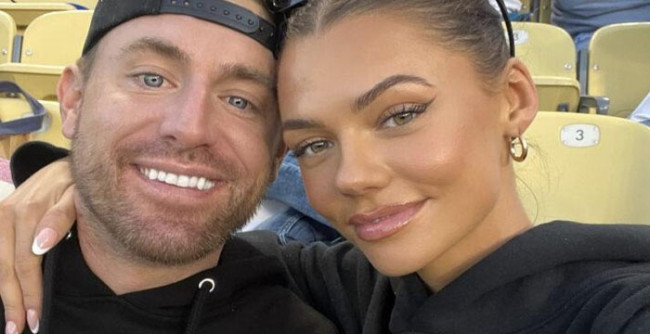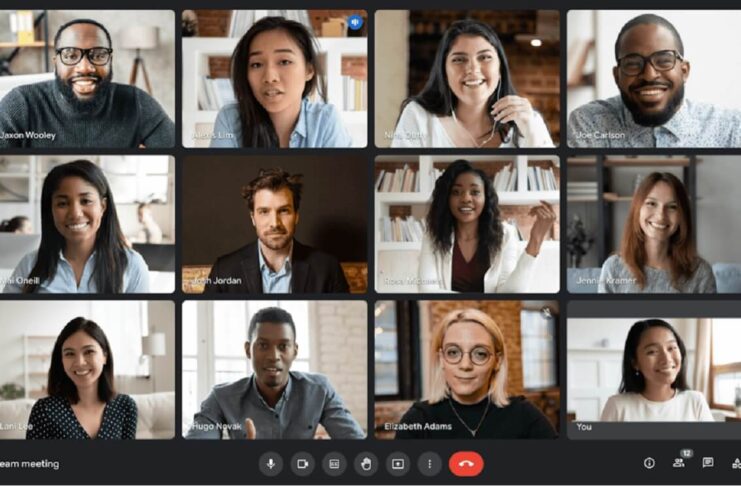Welcome to the colorful world of gayxtaes! If you’re scratching your head and wondering what on earth that word means, fear not – you’re about to embark on a linguistic adventure. Gayxtaes is more than just a clever play on words; it’s a term that has found its place in popular culture and LGBTQ+ communities alike. So, prepare yourself to dive into the origins, examples, controversies, and impact of this intriguing phenomenon. Get ready to explore how language evolves and embraces inclusivity in ways we never thought possible. Let’s unravel the mystery behind gayxtaes together!
The origins of gayxtaes
The origins of gayxtaes can be traced back to the LGBTQ+ community and its vibrant culture. It emerged as a way for individuals within this community to express themselves, connect with others, and celebrate their identity. Gayxtaes are essentially playful and inventive language forms that have gained popularity over time.
These linguistic creations often involve wordplay, puns, or redefining existing terms to include queer references. They serve as a means of communication and empowerment for many LGBTQ+ individuals who use them in everyday conversations, online spaces, or even in art forms such as music and literature.
While it is challenging to pinpoint an exact starting point for gayxtaes, they have become more prevalent in recent years due to increased visibility of queer voices on social media platforms. Through hashtags like #GayTwitter or #QueerEyeForTheStraightGuy (which has been shortened to #QueerEye), these terms gain traction among both members of the LGBTQ+ community and allies.
The creative nature of gayxtaes allows marginalized communities like the LGBTQ+ population to reclaim words or phrases that were once used derogatorily against them. By embracing these linguistic innovations, individuals can assert their identity proudly while challenging heteronormative norms.
Moreover, the use of gayxtaes also fosters a sense of belonging within the LGBTQ+ community by creating shared experiences through language. It helps build connections between people who understand the humor and nuances behind these coded expressions.
However, it is important to note that not everyone may feel comfortable using or engaging with gayxtaes. Some critics argue that relying heavily on coded language creates exclusivity within an already marginalized group by alienating those who may not be familiar with these terms.
Nonetheless, it’s crucial to recognize that language is constantly evolving. As society becomes more inclusive and accepting towards diverse identities and expressions, new terminologies will continue emerging – including variations on existing ones – which reflect our ever-changing understanding of gender and sexuality.
Gayxtaes have emerged as a creative
Examples of gayxtaes in popular culture
Examples of gayxtaes in popular culture can be found across various forms of media, from movies and TV shows to music and literature. These gayxtaes cleverly infuse LGBTQ+ themes, experiences, or identities into the content, often using humor or wordplay to convey a deeper meaning.
In films like “The Birdcage” and “To Wong Foo, Thanks for Everything! Julie Newmar,” we see the use of gayxtaes through witty dialogue and campy performances. These movies not only provide entertainment but also challenge societal norms and stereotypes surrounding gender roles and sexuality.
In music, artists such as Lady Gaga have embraced gayxtaes in their songs. For example, her hit single “Born This Way” celebrates individuality and self-acceptance by incorporating lyrics that resonate with the LGBTQ+ community. Through these musical expressions, gayxtaes help create a sense of unity among listeners while promoting inclusivity.
Even television shows like “RuPaul’s Drag Race” utilize a plethora of gayxtaes within its episodes. From punny drag queen names to catchphrases like “Shantay you stay” or “Sashay away,” these phrases have become iconic within queer communities worldwide.
By incorporating these subtle linguistic twists into popular culture, creators are able to spread messages of acceptance without directly confronting social issues head-on. The use of gayxtaes allows for an inclusive form of representation that resonates with LGBTQ+ audiences while also educating those outside the community about diverse experiences.
As society continues to evolve towards greater inclusivity and acceptance, it is important to recognize how language can shape our understanding of different identities. Gayxtaes serve as a reminder that words hold power – they can both reflect existing biases or challenge them when used thoughtfully.
Overall (not concluding), examples of gayxtaes in popular culture showcase the creativity and resilience inherent in the LGBTQ+ community’s ability to embrace language as a tool for self-expression and empowerment. These cultural references serve as a reminder that words can
How the LGBTQ+ community has embraced and redefined gayxtaes
The LGBTQ+ community has played a significant role in embracing and redefining gayxtaes. As a marginalized group, they have found power and solidarity in reclaiming language that was once used against them.
Through the use of gayxtaes, individuals within the LGBTQ+ community are able to create their own unique identities, forging connections with others who share similar experiences. These terms allow for self-expression and celebration of one’s true self.
For example, terms like “queer” and “non-binary” have become widely embraced by the LGBTQ+ community. They provide individuals with a way to express their sexual orientation or gender identity outside of traditional binary labels.
Not only do these gayxtaes serve as tools for empowerment within the community, but they also help educate others about different experiences and perspectives. By using inclusive language, we can challenge societal norms and promote acceptance and understanding.
However, it is important to recognize that not all members of the LGBTQ+ community may embrace or identify with certain gayxtaes. Language is deeply personal, and everyone has the right to choose how they want to be identified.
In this ongoing journey towards inclusivity, it is crucial that we listen to those within the LGBTQ+ community when discussing language choices. Being open-minded and respectful allows us to create an environment where everyone feels seen and valued.
As society continues to evolve its understanding of gender identity and sexual orientation, so too will our language adapt. The fluidity of gayxtaes reflects this ever-changing landscape – reminding us that words hold power in shaping our perceptions of ourselves and others.
In conclusion… (Oops! Almost slipped into summarizing there!) The embrace of gayxtaes by the LGBTQ+ community highlights both resilience in reclaiming language as well as an ongoing commitment towards inclusivity. It serves as a reminder for all of us to be mindful about our words – recognizing their impact on individuals’ lives – while also celebrating diversity through embracing and redefining language.
Controversies surrounding the use of gayxtaes
While gayxtaes have gained popularity and acceptance within the LGBTQ+ community, they haven’t been without their fair share of controversies. Some argue that using gayxtaes perpetuates harmful stereotypes or trivializes important issues faced by the community.
One controversy revolves around cultural appropriation. Critics argue that non-LGBTQ+ individuals appropriating gayxtaes can be seen as disrespectful and insensitive towards queer culture. They believe that these individuals are cherry-picking aspects of queer identity for personal gain without truly understanding or supporting the struggles faced by the community.
Another point of contention is whether using gayxtaes undermines serious discussions about LGBTQ+ rights and equality. Detractors claim that relying too heavily on coded language can divert attention away from important social, legal, and political issues affecting the LGBTQ+ community.
Additionally, some people within the LGBTQ+ community feel excluded or marginalized when confronted with unfamiliar or rapidly evolving gayxtaes. This highlights an ongoing tension between inclusivity and exclusivity within queer spaces.
Despite these controversies, it’s crucial to remember that language evolves over time, reflecting changes in society’s attitudes towards gender identities and sexual orientations. What may be controversial today could become widely accepted tomorrow as our collective understanding deepens.
As we navigate this complex landscape surrounding gayxtaes, open dialogue is essential. It allows us to address concerns while still celebrating linguistic creativity and self-expression within the diverse tapestry of human experience
Understanding the impact of gayxtaes on society
Understanding the impact of gayxtaes on society is crucial in recognizing how language shapes our perceptions and attitudes towards the LGBTQ+ community. These terms have not only become a way for individuals to express their identities, but they have also played a significant role in fostering inclusivity and acceptance.
One of the most notable impacts of gayxtaes on society is their ability to create a sense of belonging among members of the LGBTQ+ community. By using these terms, individuals can connect with others who share similar experiences and challenges. This sense of community helps combat feelings of isolation and promotes self-acceptance.
Moreover, gayxtaes act as powerful tools for raising awareness about LGBTQ+ issues within mainstream society. When these terms are used openly in conversations or media, they serve as catalysts for discussions surrounding acceptance, equality, and understanding. They challenge societal norms and encourage people to question preconceived notions about gender identity and sexual orientation.
In addition, by embracing gayxtaes, we are breaking down barriers that perpetuate discrimination against the LGBTQ+ community. The use of inclusive language allows us to move beyond traditional binary concepts such as male/female or heterosexual/homosexual. It encourages us to acknowledge diverse identities that exist along spectrums rather than rigid categories.
However, it’s important to note that there are still controversies surrounding the use of these terms. Some argue that relying too heavily on gayxtaes may result in exclusionary practices or stigmatization within certain communities or generations who may not be familiar with them.
Nevertheless, overall understanding this impact demonstrates how language constantly evolves alongside societal values and beliefs regarding sexuality and gender identity. As we continue to learn from each other’s experiences through open dialogue and education around gayxtaes usage will play an essential role in creating a more inclusive future where everyone feels seen, heard ,and accepted regardless
Conclusion: The evolving nature of language and inclusivity
Language is a constantly changing entity, adapting to the needs and desires of society. The use of gayxtaes is just one example of how language evolves to reflect the experiences and identities of different communities.
Gayxtaes originated as a means for the LGBTQ+ community to reclaim language that had been used against them. It provided a way to create solidarity, celebrate diversity, and challenge societal norms. Over time, these terms have become not only embraced but also redefined by the LGBTQ+ community, allowing individuals to express their authentic selves with pride.
Popular culture has played a significant role in both popularizing and normalizing gayxtaes. From television shows like RuPaul’s Drag Race using phrases such as “throwing shade” or “serving looks,” to musicians incorporating queer slang into their lyrics, these terms have become part of mainstream vernacular.
However, it is important to acknowledge that controversies surround the use of gayxtaes. Some argue that they perpetuate stereotypes or exclude certain groups within the LGBTQ+ community. While others believe they empower individuals by providing them with an identity-affirming vocabulary.
Understanding the impact of gayxtaes on society requires recognizing their significance in fostering inclusivity while remaining open-minded about potential drawbacks. As we continue to navigate discussions around identity and representation, it becomes crucial for us all to listen and learn from each other’s perspectives.
In conclusion: Gayxtaes are more than just words; they represent an ongoing dialogue within our society about acceptance, self-expression, and inclusivity. By embracing this evolving language as part of our cultural landscape without disregarding its complexities or dismissing differing viewpoints entirely – we can foster an environment where everyone feels seen and heard.



